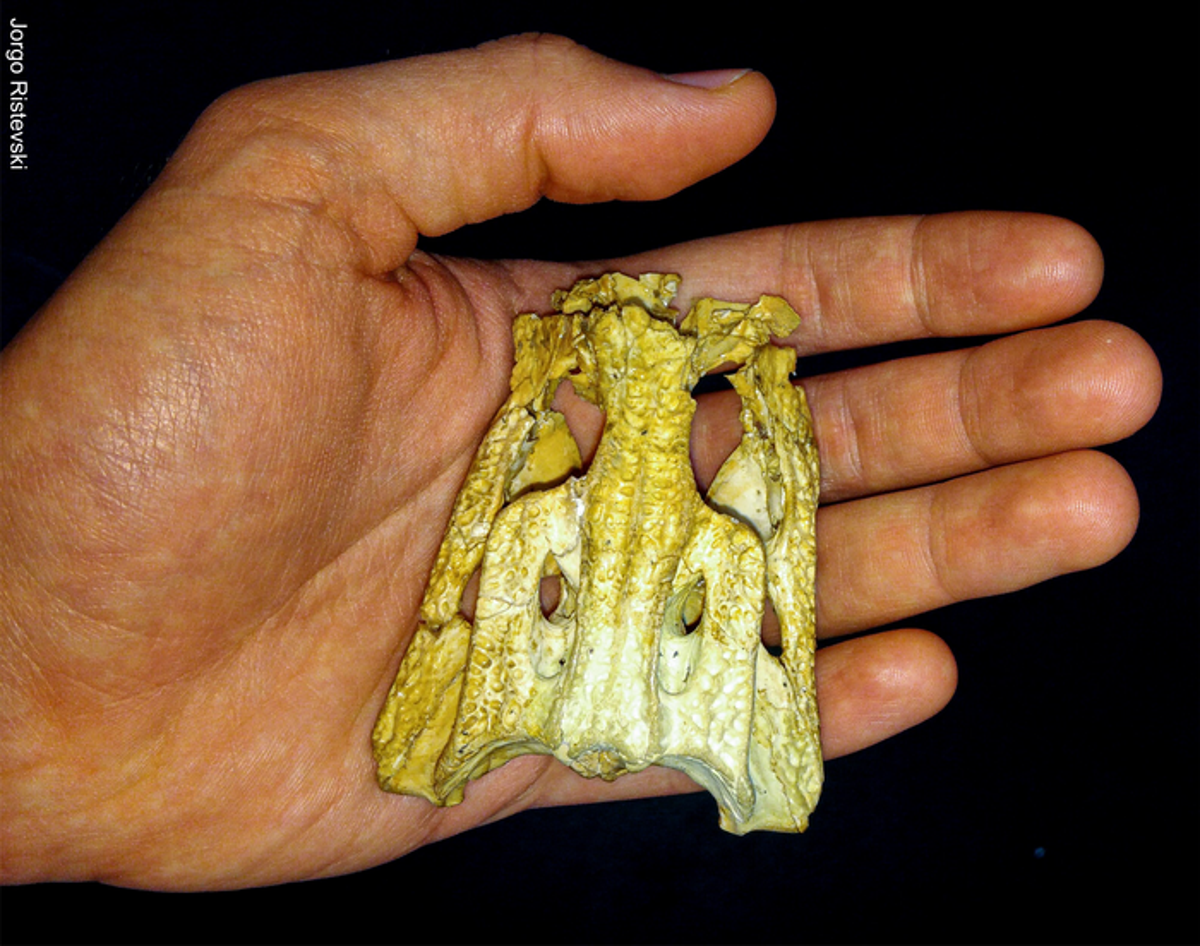Study sheds light on evolution of ‘cutest’ Australian crocodile weighing just 2kg

Scientists have uncovered previously unknown details about a tiny prehistoric crocodile that lived in modern-day Australia about 13.5 million years ago, an advance that sheds light on the evolution of these ancient reptiles.
In the research, published earlier this month in the journal The Anatomical Record, scientists used state-of-the-art CT-scanning technology and found that the tiny crocodile Trilophosuchus rackhami likely grew up to 90cm (35 inches) long and weighed up to 2kg (4.5 lb).
The crocodile’s name means Rackham’s three-crested croc – named in 1993 in honor of Alan Rackham, who now manages the Riversleigh Fossil Discovery Center at Mt Isa, Australia.
“Trilophosuchus rackhami was certainly one of the cutest. If we could travel back in time to north Queensland 13 million years ago, not only would you need to watch out for crocodiles at the water’s edge, but you’d also have to make sure you didn’t step on them in the forest,” said Steve Salisbury, one of the study’s co-authors.
“We estimated that at adulthood, ‘Trilophosuchus rackhami’ would have been between 70 and 90 centimeters long and weigh one to two kilograms, which was very small compared to most present-day crocs,” Jorgo Ristevski, a co-author of the study and PhD candidate from the University of Queensland in Australia said.
Using the state-of-the-art micro-CT scanning technology, scientists said they could digitally separate each bone and study them.
Researchers could digitally reconstruct the brain cavity of Trilophosuchus rackhami and found that it resembled that of some distantly related and potentially terrestrial extinct crocodiles from Africa and South America.
The findings, they said, can lead to crucial insights into the animal’s evolution, morphology and even behaviour.
“This was a truly unique looking croc, with a short snout and three distinct ridges on the top of its skull,” Mr Ristevski said.
“We were quite surprised to find this because evolutionarily speaking, Trilophosuchus rackhami is more closely related to today’s crocs. This may indicate that Trilophosuchus rackhami spent more time on land than most living crocs,” he added.
For all the latest Science News Click Here
For the latest news and updates, follow us on Google News.

